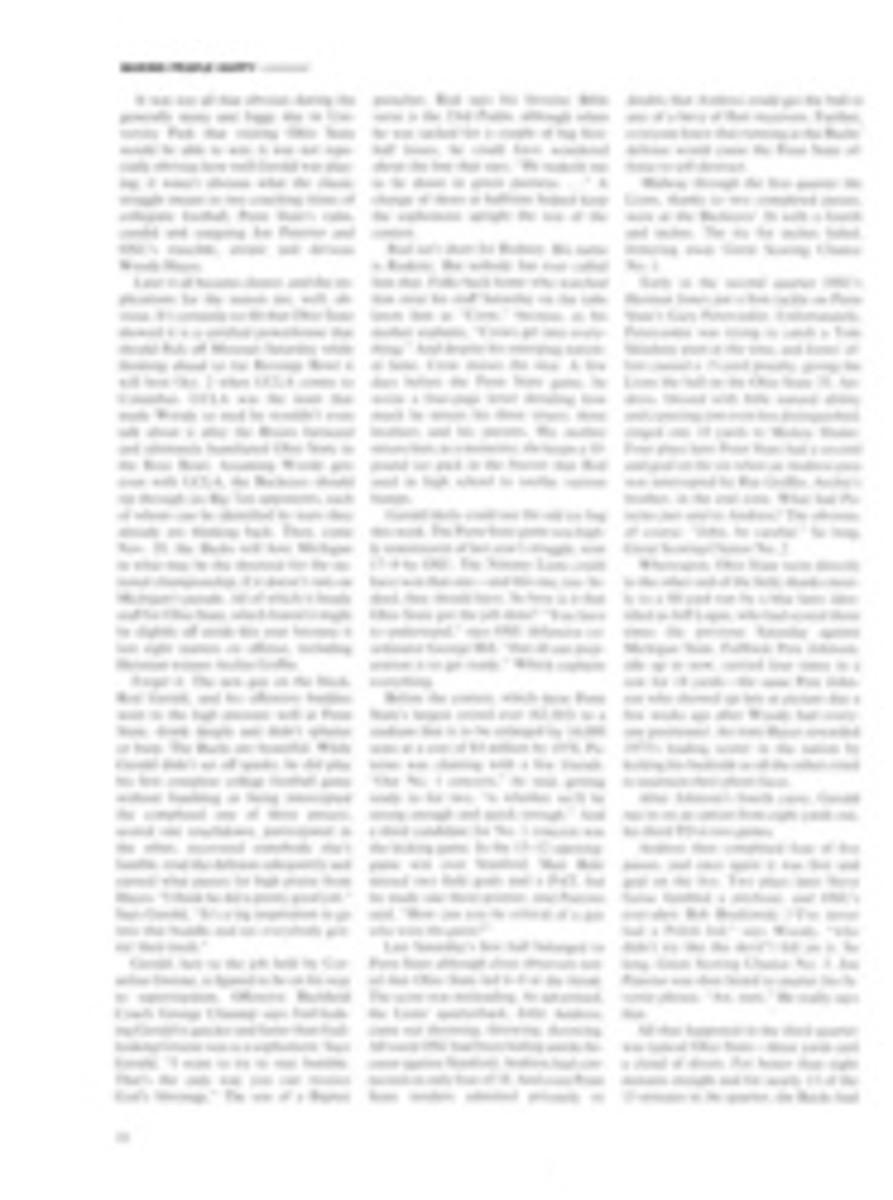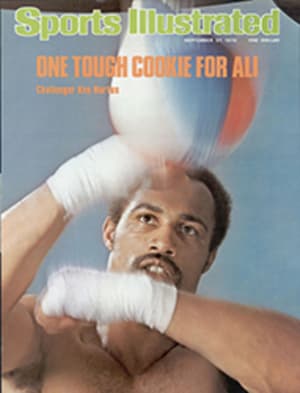
A Bear in a bull market
There are some two million bow hunters in the U.S., and at least half that many more scattered around the globe. Most were gun hunters first, many still are. All share one desire: to meet the challenge of competing with an animal on intimate, demanding terms. There are no 300-yard shots in bow hunting. The longest are rarely more than 40 yards. Most are much less. At that range the archer ranks a poor second to the animal, and his weapon—cumbersome, clumsy to mount, slow to draw—is hardly an equalizer. For the man who hunts with a bow, the odds of achieving success are poorest. It is the joy of the experience he seeks, and it is in this that he finds his rewards. That philosophy has guided Fred Bear for most of his 74 years, and while he is not opposed to killing an animal when it is done legally and in fair chase, his life's work has been to promote the broader experience of hunting in which the kill is but one factor.
Bear became interested in archery in 1927 when he saw a film, Alaskan Adventures, chronicling a three-year hunting trip by the renowned Arthur Young in which he stalked and killed a giant Kodiak bear with a wood bow. From that moment on Fred Bear was consumed by bow hunting. Unable to buy satisfactory archery equipment in Detroit, where he lived, he began building his own. Archery might have continued to be only a hobby except for the fact that in 1933 the spare tire cover factory where he worked burned down and he found himself unemployed at the depth of the Depression. With about $600 worth of equipment in his basement workshop, Bear went into the archery business.
At the time it was anything but a high-profit industry. A skilled bowmaker, working 14 hours, could expect to produce one wood bow. A comparably skilled arrow-maker might turn out five dozen arrows. Bear hired four leather workers to make quivers, armguards and private-label leather goods, Bear Archery's major source of income in those early days. Then, while his crew worked in Detroit, Bear went about the task of creating a market for his products. He traveled the sport-show circuit doing shooting exhibitions, competed in countless archery tournaments around the country, produced a library of films on bow hunting and spoke tirelessly at dinners and sports clubs.
"When the man with the big feet spoke," says one of his longtime associates, "people listened."
By 1947 the business had prospered to the point that Bear was able to build an 8,500-square-foot plant on the banks of the Au Sable River in Grayling, Mich. But he was still searching for a method to mass-produce bows. For this he needed a material that was stronger than wood and would not break or become fatigued in extreme cold. Fibreglas provided the breakthrough. After impregnating it with resin, Bear succeeded in laminating the combination to wood. The result was a bow that could be mass-produced at reasonable cost, was stronger and more dependable than wood and yielded greater accuracy.
While developing the glass bow, working 14 to 16 hours at the plant and living in a tent on the banks of the Manistee River, Bear also found time to court a bride. Rather than postpone the marriage until they could afford more conventional living quarters, they honeymooned in the tent. "When Fred brought home guests," Henrietta Bear recalls, "he would toot the car horn the last mile through the woods to warn me that someone was coming."
Although they still have the property on the Manistee, the Bears have abandoned the tent that was home for the first two years of their marriage except in the deep of winter. They now live in a handsome ranch house overlooking a cove of the Au Sable on property adjacent to the factory. When he is not off on a hunt or at the office, where he still spends 12 to 14 hours a day. Bear can usually be found at a large picture window that looks out on a maze of bird and small animal feeders. He is no less fascinated by the tiny creatures that frequent his yard than by the larger ones he has stalked.
Although he is still the boss and the brains of Bear Archery, Bear sold the company eight years ago to Victor Comptometer, which also owns Daisy air rifles and Heddon fishing tackle. Today Bear Archery is twice the size of its nearest competitor and accounts for 30% of all archery tackle sold in the world. Its remarkable growth in recent years reflects that of the archery industry as a whole. New and improved equipment, an increase in the number of people bow hunting and the re-establishment of archery at the Olympics, which revived interest in the sport at schools and colleges, have all contributed to the company's success.
"People are discovering that archery is fun," Bear says, "that it develops coordination, and that it is a sport for every member of the family."
It also develops other things. Over Bear's drafting table in his office is a picture of a topless beauty with a bow. The slogan under it reads: "If you are going to hunt, go Bear!"
"Now if you look at that picture carefully," says Bear, "you'll see there's a message there. One reason so many young women are taking up archery these days is the Five Bs: Bear Bows Build Bigger Busts."
Elsewhere on Bear's office walls are the awards, honors and citations accumulated during his almost 50 years in the sport. Bear holds two first places in the Pope and Young Club, which is bow-hunting's equivalent of Boone & Crockett. No other archer holds more than one. In 1966 he was inducted into the Sporting Goods Hall of Fame; three years ago he was one of the original inductees into the Archery Hall of Fame; and that same year he was inducted into the Hunting Hall of Fame.
Bear's own accounts of his adventures have appeared in books and countless magazine articles, and a compilation of his journals of hunting trips around the world will be published by Doubleday next year. He is a frequent guest on television sports shows, and this winter he will have his own syndicated series, The American Outdoors.
Over the years Bear has made more than 20 hunting films covering such diverse quarry as polar bears in the Arctic, tigers in India and elephants in Africa. These are shown on a regular schedule in the theater of the Fred Bear Museum, located a mile and a half west of Grayling.
Each year more than 100,000 people visit the museum, which was built in 1967 and houses, in addition to the theater, the Archery Hall of Fame, a pro shop, a gift shop and an archery range. It is also the showcase for Bear Archery products. The real showcase, however, is the museum itself.
It contains many of the major trophies Bear has collected around the world as well as a remarkable assortment of artifacts that trace the history of archery back to its earliest origins. The museum's collection includes the bow, with its horn knocks and Irish-linen strings, used by Arthur Young on the Alaskan adventure that started Fred Bear's archery career.
Bear has taken more than 125 big game animals with the bow, enduring the considerable number of close calls to be expected in this form of hunting. In Mozambique, after successfully downing the second lion ever taken by a modern bowman (Arthur Young took the first in 1920), Bear found himself trapped in his blind from sunset until after midnight by the animal's mate. He was charged by a cape buffalo that missed him but succeeded in wrecking his hunting vehicle. In French Equatorial Africa, alone and on foot, he was surrounded by a herd of browsing elephants. On two separate trips he was charged by polar bears which would not be stopped by the arrows he put into them. They were finally downed by rifle fire, one 12 paces and the other 25 paces from where he stood. He did eventually take a white bear with a bow (the rifle shots disqualified the first two as trophies) but only after a third expedition and 23 days on the polar ice cap. On another hunt he spent a long, cold night in a pine tree while a sow grizzly dug its claws into the bark a scant few inches below his feet.
"When she came running toward me, I went up that tree as far as I could," he says, "but it wasn't a very big tree and I'm a pretty long fellow. Every time I moved, she'd go huh huh huh and click those teeth. It turned cold and started to rain but she stayed there from dark until 8 o'clock the next morning. It's still true, though, that if you give a bear a chance to get out of your way, 90% of the time he will. There is something very special about bears. They're a very dignified animal. I guess that's why I love to hunt them."
PHOTO
PHOTO
USING WHAT HE SELLS, BEAR HAS TAKEN A REMARKABLE NUMBER OF BIG-GAME TROPHIES

